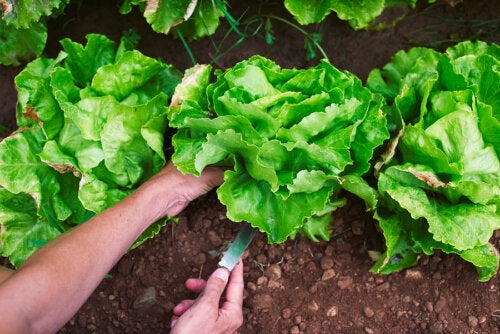When creating a mini-garden, a mini-garden and others, the most important thing is to have imagination and look for simple, but ingenious solutions that make good use of all resources. Home gardens are a very good option when looking to eat better and adopt a healthier lifestyle. In fact, when you harvest at home, you tend to value the whole harvesting process and what it entails when putting food on plates.

There are different ways to design home gardens. Before making a decision, you need to consider the climate, the amount of sunlight, and the type of soil. These factors could affect the growth of the vegetables and greens you grow. It will also determine which ones you can grow and which ones you can’t.
1. Home gardens in the garden?
Home gardens can be installed in the garden, in the frame of a kitchen window or on the balcony, or in other interior spaces.
It should be noted that the location must be functional to be able to manipulate it easily. In addition, this adds a lot on an aesthetic level.
Setting aside a space in the garden to grow vegetables and greens is ideal, but not everyone has a garden at their disposal. However, all is not lost, there is always at least a small space within the home that can be used.
In the case of home gardens in the garden, the extent and depth of the garden soil will help the growth of the crop unlike other gardens with more limited space. It allows to grow aromatic herbs, vegetables and tubers.
To begin, you should choose a square or rectangular section of the garden in which you will install your garden. Make sure to clean the soil of grass roots and any other plants very well. Separate the planting space by rows.
In each row, grow a type of vegetable or vegetable leaving at least 15 centimeters of separation between each one. You should know what greens and vegetables you can include according to the climate, shade and sunlight of your garden.
Remember that most vegetables and greens need sunlight most of the day to survive. Others, like spinach, lettuce, and parsley need less than 4 hours of sunlight a day.
2. Home gardens in pots.
If you do not have space in your garden or you simply do not have a garden at home, you can make your garden with pots. The pots can be placed inside or outside your home. If you do it indoors, make sure it is near a window where you have sunlight. Homemade potted gardens allow you to easily harvest your harvest. Therefore, it is said that they are a very versatile and comfortable option.
The size of the pots will depend on the plants you like to harvest and the space set aside for the garden. Smaller pots are great for herbs like basil, spearmint, parsley, and mint.
Medium pots are ideal for lettuce and cabbage. On the other hand, slightly larger pots are used to harvest peppers and tomatoes. One of the disadvantages of this type of garden is that you will not be able to grow tubers such as:
- Leeks.
- Carrots.
- Beets.
These vegetables need larger grounds to spread their roots and grow properly. A pot does not give them the space to develop, so if they grow, they will be “miniature” in size.
3. Gardens with height.
Home gardens in aerial pots are the solution when you have little space in your home. These pots can be hung near a window, inside or outside the house. The important thing is that your crops get enough sunlight. You can buy aerial pots in nurseries or build them yourself. For this you can take the regular pots and add a metal chain or rope.
They are not only very functional but also very original as decorative elements. For example, different vegetables and herbs can be placed on each of the strings of the pots to give it more sumptuousness and appeal.
You can also place the strings of pots at different heights to make your garden look varied and resourceful. You must take care of the irrigation of your planting. Watering with plenty of water will cause the pots to drain the excess underneath.
This surplus will fall on the next pot or on the ground. In addition to causing you a cleaning problem, your vegetables will wither from receiving more water than necessary. Using a sprinkler is the best option for watering your plants.
4. Modular gardens.
Building a wooden shelf is another way to design your home garden, especially if you have little space at home. This shelf can be located outside your house attached to a wall that receives sunlight. Build it in 3 or 4 levels according to your needs. In each level you can place small pots with your crops. This design is ideal for harvesting aromatic and medicinal plants.
These plants generally need only 4 hours of direct sunlight a day to grow. Considering that the shelves could provide some shade, these crops are perfectly suited to a modular garden design.
As you can see, the space in your house will not prevent you from having a healthy and fresh crop of vegetables and greens. There are many ways to design home gardens. You just need some creativity and ingenuity when it comes to getting down to business.


